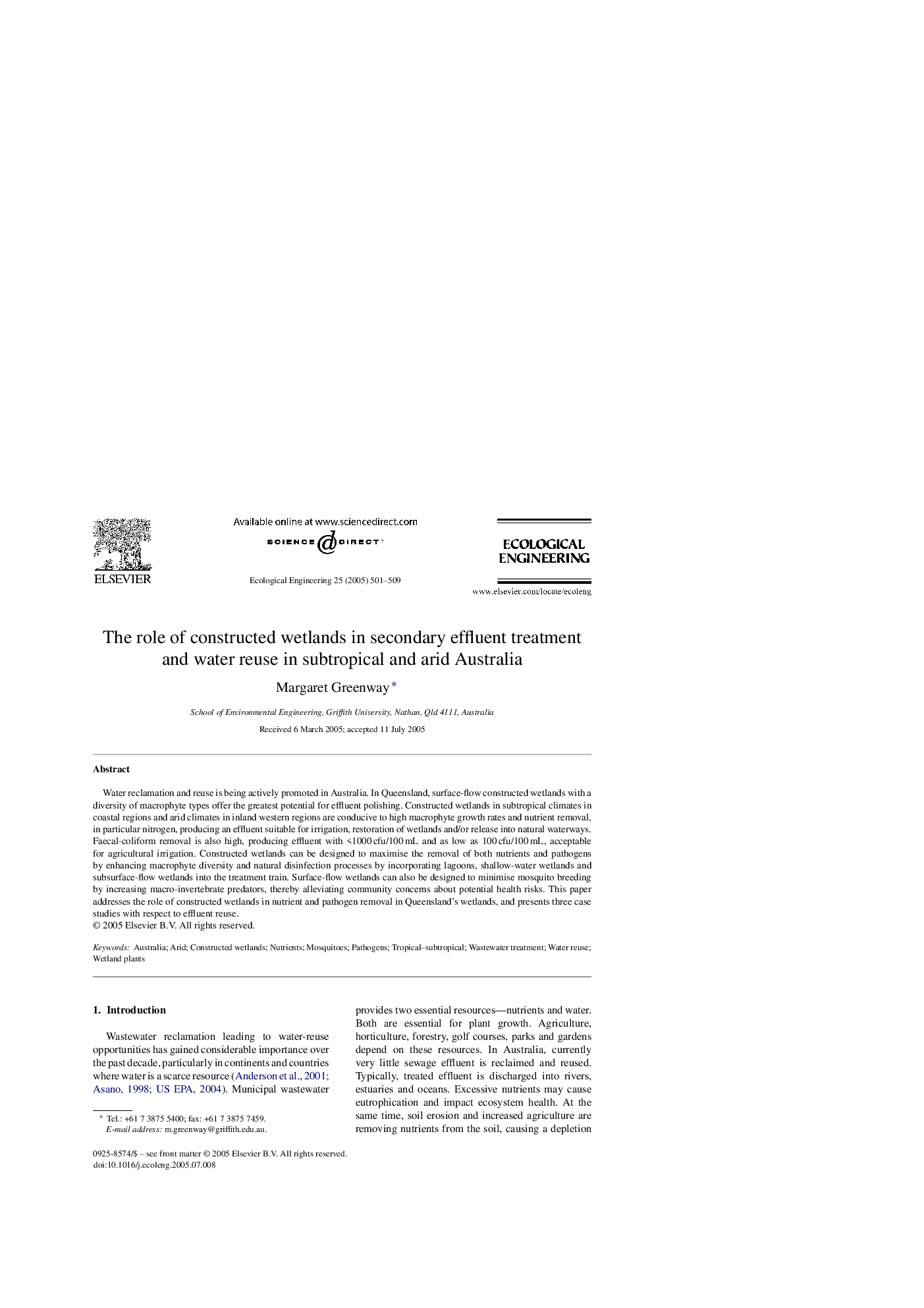| Article ID | Journal | Published Year | Pages | File Type |
|---|---|---|---|---|
| 9447510 | Ecological Engineering | 2005 | 9 Pages |
Abstract
Water reclamation and reuse is being actively promoted in Australia. In Queensland, surface-flow constructed wetlands with a diversity of macrophyte types offer the greatest potential for effluent polishing. Constructed wetlands in subtropical climates in coastal regions and arid climates in inland western regions are conducive to high macrophyte growth rates and nutrient removal, in particular nitrogen, producing an effluent suitable for irrigation, restoration of wetlands and/or release into natural waterways. Faecal-coliform removal is also high, producing effluent with <1000Â cfu/100Â mL and as low as 100Â cfu/100Â mL, acceptable for agricultural irrigation. Constructed wetlands can be designed to maximise the removal of both nutrients and pathogens by enhancing macrophyte diversity and natural disinfection processes by incorporating lagoons, shallow-water wetlands and subsurface-flow wetlands into the treatment train. Surface-flow wetlands can also be designed to minimise mosquito breeding by increasing macro-invertebrate predators, thereby alleviating community concerns about potential health risks. This paper addresses the role of constructed wetlands in nutrient and pathogen removal in Queensland's wetlands, and presents three case studies with respect to effluent reuse.
Keywords
Related Topics
Life Sciences
Agricultural and Biological Sciences
Ecology, Evolution, Behavior and Systematics
Authors
Margaret Greenway,
